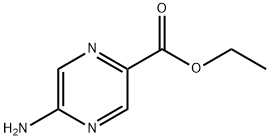A patient with neuroblastoma has remained in remission for more than 18 years after receiving chimeric antigen receptor (CAR) T-cell therapy, without the need for any other treatments. I have some questions.How exactly does CAR - T therapy work to achieve such a remarkable result of enabling some malignant tumor patients to survive for 18 years? Are there specific types of tumors it is most effective against? What are the potential side - effects of this long - term treatment, and how do doctors manage them?
CAR - T Therapy: A Miracle Cure that Enables Malignant Tumor Patients to Survive for 18 Years?
Related Products More >
-
- 9003-05-8
- USD 30.0000
- 25kg
-
- 9003-05-8
- USD 30.0000
- 25kg
-
- 108-80-5
- USD 50.0000
- 50kg
-
- 9001-62-1
- equest For Quotation
-
- 86428-83-3
- equest For Quotation
- 25KG/Bag
-
- 79319-85-0
- equest For Quotation



 沪ICP备2021018848号-5
沪ICP备2021018848号-5

Now, about the specific types of tumors it's most effective against. CAR - T therapy has been approved for some blood cancers like leukemia and lymphoma. But for solid tumors, it has been a bit more challenging. However, this case of neuroblastoma shows that it can be effective for certain solid tumors too. Generally, it seems to work better when the CAR - T cells can be designed to specifically target a protein that is highly expressed in the tumor cells.
As for the potential side - effects of this long - term treatment and how doctors manage them, the article doesn't really go into detail about the side - effects. But usually, CAR - T therapy can have side - effects like cytokine release syndrome, which can cause fever, low blood pressure, and trouble breathing. Doctors manage these side - effects by closely monitoring the patients. They might use medications to control the symptoms. For example, if a patient has a high fever due to cytokine release syndrome, they can give drugs to bring down the fever. And if there are issues with low blood pressure, they can use medications to help raise it. Also, they keep a close eye on the patient's overall condition to make sure the treatment is not causing too much harm while still being effective against the cancer.
Now, about the types of tumors it works best on. Currently, CAR - T therapy has shown great success in blood cancers like leukemia and lymphoma. But for solid tumors, it's been a bit of a struggle. However, this neuroblastoma case gives us hope. Generally, it works better for tumors that have some unique proteins on their surface, which the CAR - T cells can be designed to target. So, it's not limited to just one type, but the key is finding that specific target on the cancer cells.
As for the side - effects of long - term CAR - T treatment and how doctors deal with them. Usually, one of the main side - effects is cytokine release syndrome. It's like the body's immune response goes a bit overboard. The patient may have a high fever, feel really weak, and have problems with their blood pressure. Doctors manage this by constantly watching the patient's vital signs. They use medications to calm down this over - active immune response. For example, they might give drugs to control the fever and medications to stabilize the blood pressure. Also, they adjust the treatment plan according to how the patient's body reacts, trying to balance the effectiveness of killing cancer cells and minimizing the harm from side - effects.